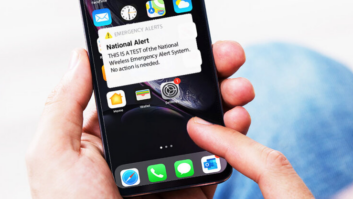There seems to be a common notion among broadcasters that there are no new people getting in to the business. I dispute that � and I�ll make my case at another place and time.
These are the basic soldering tools needed in every engineering shop.A cable tester and DMM are must-haves for every engineering shop. If you are new to the business, though, read on. We�re going to talk about what you need to set-up shop, so that you can be effective as soon as possible while taking on this new role.


Hand tools. If your background is in IT, then likely you�re going to have hand tools that will work in the radio engineering shop, since at least half of it consists of computers.
I have found, though, that many younger people with technical backgrounds still don�t know how to solder. This is a skill you�ll need to acquire as soon as you can � because unlike the IT world, many cables used in the day-to-day world of radio require self-assembly.
Get a soldering iron, find a place to use it that has the necessary ventilation, and start practicing. There are tutorials on YouTube that can get you started.
Cable testers. The assembly of cables should always be followed by a quick test, whether they are RJ45 type Ethernet cables or microphone cables to be used at a remote. The Rolls CS1000 is definitely worth considering because it tests many different types of cables, including XLRs, TRS connectors, 1/8-inch connectors and the all-important RJ45 style Ethernet connector. There are many other cable testers out there, of course.
Custom cables. Every facility will have its own particular needs for custom cables. In practice, the driver of the custom cable need is whatever console is in use. Determine the type of connectors used for console�s signal inputs, and its signal outputs; then, make up the following set:
� XLR female to console input type
� Console output type to XLR male
� Console output type to 1/4-inch TRS female (for use with headphones)
Note that on the headphone cable, you�ll use one side only of an analog output. Wire up the �+� output and ground (or common) to one headphone input side, and the other channel�s �+� output, and ground, to the other headphone input. Having a good pair of headphones is very important; it allows you to use the most important piece of test gear at the radio station � your ears and brain.
Signal generators/receivers. When you connect piece of gear A to piece of gear B, one of two things can happen: Either it will work, or it won�t.
When it doesn�t work, you have two things to look at. Is the cable good? (See above.) If the answer to that question is yes, then you move on to the signal generator/receiver step, because either A isn�t sending, or B isn�t receiving. You will substitute a known-good signal source for A, and if necessary, a known-good signal receiver for B.
A signal generator as well as a signal receiver are important tools that facilitate analysis of problems at a radio station. One choice among many for a signal generator is the Ward-Beck ABS-1, which generates an AES3 digital audio signal, of 1kHz or 400Hz, at the three most commonly used sampling rates of 48 kHz, 44.1 kHz or 32 kHz. Digital signal levels of -20, -12 and 0 dBFS are front panel selectable. Stereo analog tones of 1 kHz or 400 Hz may also be selected at levels of -16, -8 and +4 dBu; outputs are 1/4-inch TRS. To distinguish between the CH A and CH B (left and right) signals, the unit provides the option to cycle and/or invert the CH B (right) signal or to turn it off completely.

The complement to the ABS-1 is the ABB-1, which provides the convenient way to monitor both digital (AES/EBU, S/PDIF) and analog audio signals. Digital and analog program audio can be monitored by the headphone output while the L/R levels are displayed on LED bar graph meters. AES3 signal parameters such as sampling frequency, emphasis, professional or consumer format, and data errors are displayed when monitoring AES/EBU or S/PDIF signals. Digital input monitors sampling frequencies from 30 kHz to 50 kHz automatically. Analog inputs are done via 1/4-inch TRS connectors. Both the ABB-1 and the ABS-1 can be powered by batteries, meaning they�re easy to carry around.
Handheld DMM. The most important features of any handheld digital multimeter are its ability to measure AC and DC voltage; resistance; and AC or DC current. 95 percent of the time, you�ll be using the first two features. Obtain a DMM immediately.
We�ll continue this topic in next month�s Tech Tips column. In the meantime, if you have any of your own tips to share, by all means send them in to [email protected]. We�re always interested.







